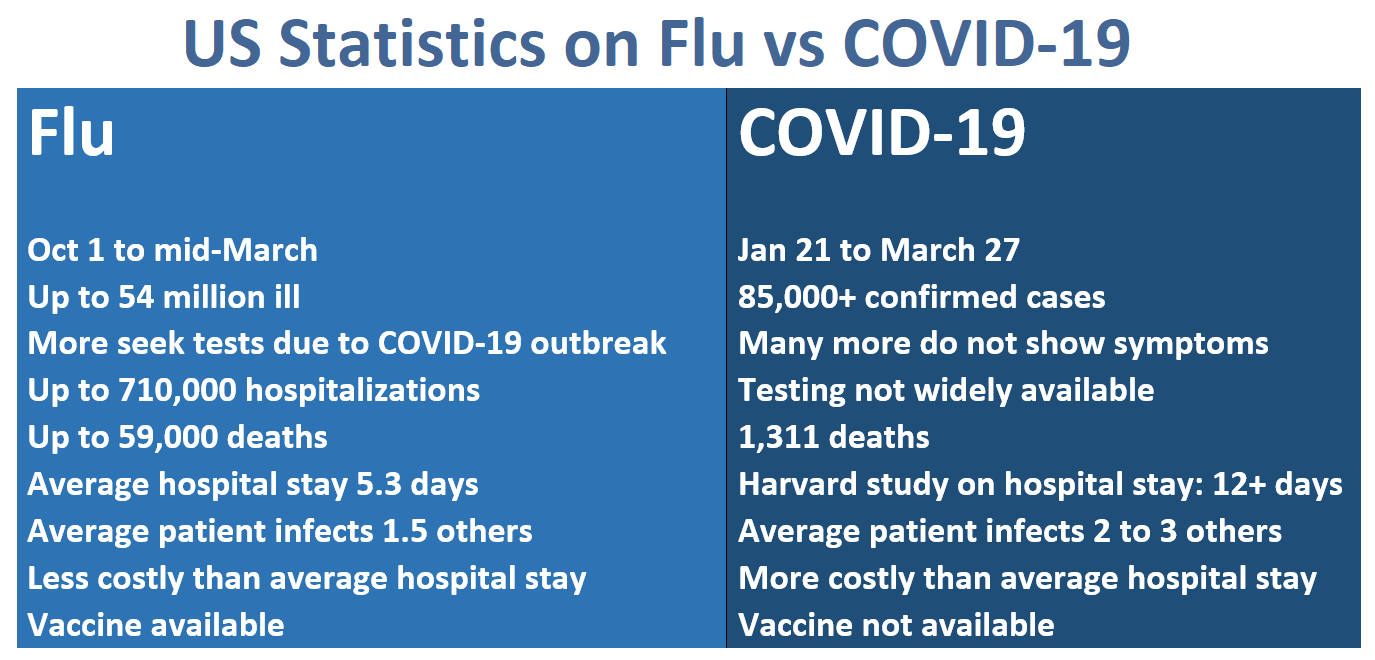The Flu, COVID-19 and the Economy
The United States leads the world in confirmed cases of COVID-19, passing even China, with almost four times the population and where the disease emerged in November. Some government and business leaders resist advice from public health experts on lockdowns and slowed economic activity. There is an argument that a pause on food supplies, utilities and other essential services poses a health threat, too. Many who support reopening economies compare the mortality rates for seasonal flu and COVID-19. So far, flu cases eclipse COVID-19 cases, with key differences. The two illnesses present similar symptoms including fever, coughing and aches. COVID-19 is deadly in about 3 percent of confirmed cases, while the flu has a mortality rate of 0.1 percent of cases. For COVID-19, many people report no or few symptoms yet still spread the disease. More COVID-19 cases require hospitalization; those hospital stays can last 10 days or more whereas flu hospital stays average about five days. COVID-19 is more contagious. A person with COVID-19 can infect three others while the typical patient with flu typically infects about 1.5 people. Finally, vaccines are available each year for the flu and none is available for COVID-19. COVID-19 is overwhelming hospitals, reducing their capability to care for patients with other problems including heart attacks, accidents and more. Epidemiologists estimate that anywhere from 20 to 60 percent of the population may become infected with COVID-19. The new disease poses many unknowns and protective equipment is in short supply. For example, the flu is known to be seasonal, but COVID-19’s seasonal pattern is unknown. Washing hands thoroughly and practicing and enforcing social distancing prevents both diseases. Ignoring health experts' advice could bring great economic harm. – YaleGlobal
The Flu, COVID-19 and the Economy
Some leaders hesitate to close economies, suggesting that society tolerates the mortality rates of the flu – COVID-19 poses more challenges than the flu
Friday, March 27, 2020

Read about the flu from the US Centers for Disease Control and Prevention.
Read about differences between the flu and COVID-19 from Agence France-Presse.
Read about hospital stays for the flu from the US National Center for Biotechnology Information.
Read about hospital capacity from Health Affairs.
Read about varying US hospital readiness from ProPublica.

COVID-19: Quality Shock to Globalization Booming US Growth in Question Border Walls: Bad Medicine for Wrong Diagnosis WHO Declares COVID-19 Pandemic: Voice of America © 2019 YaleGlobal and the MacMillan Center